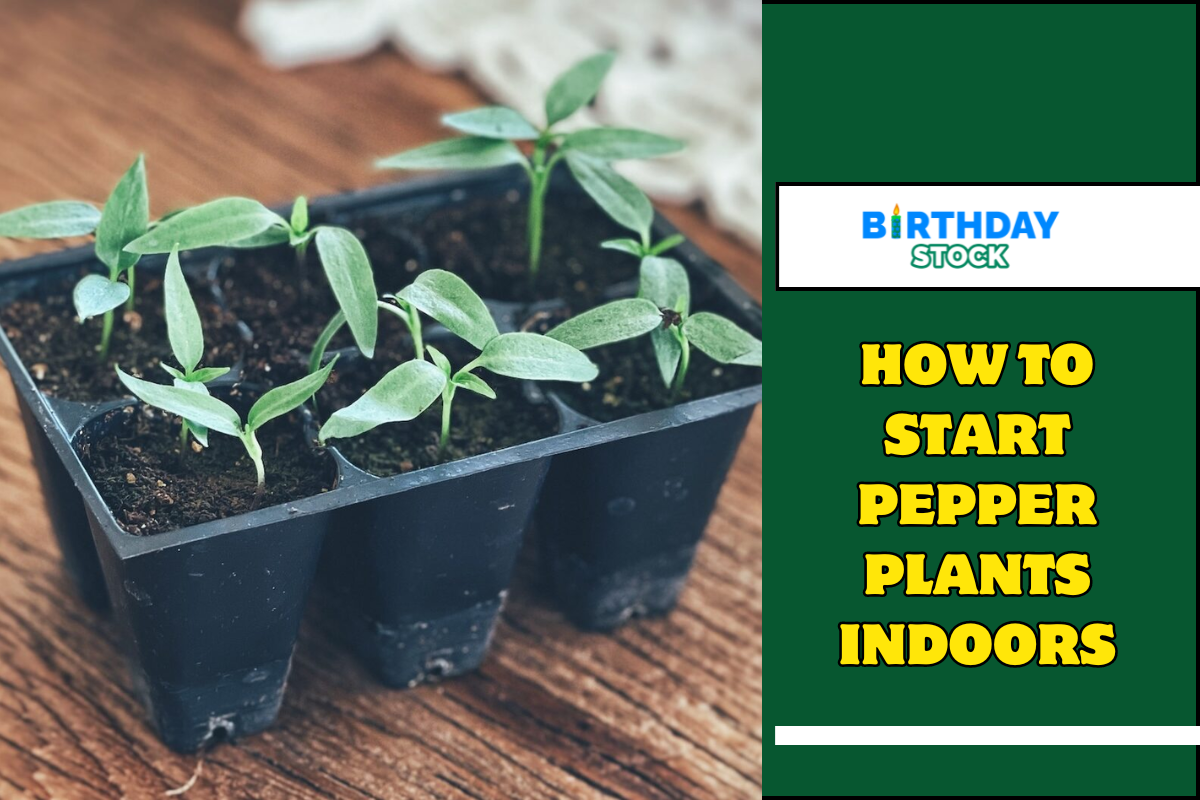How To Start Pepper Plants Indoors: You can get a head start on the growing season by starting pepper plants indoors. This will ensure that the plants are strong and healthy by the time they’re ready to be moved outside.
How To Start Pepper Plants Indoors
In this complete guide, we’ll show you how to start pepper plants indoors, from choosing the right seeds to making sure the seedlings have the best conditions for growth.
1. Choosing Pepper Seeds
For indoor gardening to go well, you need to choose good pepper seeds. Think about things like the type of pepper (bell peppers, jalapenos, habaneros, etc.), the flavor, and the level of heat you like.
To make sure the seeds are genetically pure and will grow, buy them from reputable seed catalogs or seed suppliers.
2. Seed Starting Containers
Pick containers with good drainage to keep them from getting too wet and help roots grow in a healthy way.
You could use seed starting trays, peat pots, or recycled containers like egg cartons or yogurt cups. To stop the spread of disease, make sure the containers are clean and germ-free before you use them.
3. Seed Starting Mix
Use a seed starting mix that is made for starting seeds indoors and drains well. Garden soil might have bugs, germs, or weed seeds in it, so don’t use it.
Leave a small opening at the top of the seed starting containers so that you can water them. Fill the containers with the wet seed starting mix.
4. Planting Pepper Seeds
Plant pepper seeds at the depth that the package says to, which is usually between 1/4 and 1/2 inch.
Plant two to three seeds in each pot to give them the best chance of growing, since some seeds might not sprout.
Spread a thin layer of seed starting mix over the seeds and lightly press down to make sure the seeds get good contact with the soil.
5. Providing Optimal Growing Conditions
For pepper seeds to germinate, they need to be consistently moist, warm, and lit up. Put the seed trays somewhere warm, like next to a sunny window or on a seedling heat mat, where the temperature is between 70°F and 80°F (22°C to 27°C).
Also See:
Blueberry Turnovers Recipes – Learn under Expert Guide
6. Germination and Seedling Care
Make sure the seed starting mix is evenly moist, but not so wet that it’s soaked. Too much water can cause the damping off disease.
Once the seeds start to sprout, take out any weak or crowded seedlings to make sure there is enough space and airflow.
Place grow lights or fluorescent lamps two to three inches above the seedlings and give them bright, indirect light for 12 to sixteen hours a day.
Regularly turning the seed trays will help the plants grow evenly and stop seedlings from getting too tall.
7. Transplanting Pepper Seedlings
Once the pepper seedlings have their first true leaves and are about 2 to 3 inches tall, they are ready to be moved to bigger pots or straight into the garden.
To get the seedlings used to being outside, slowly expose them to it, starting with a few hours of sunlight and building up over a few days.
8. Outdoor Planting
Pick a spot in the garden that gets lots of sun and doesn’t stay soggy to move pepper seedlings to.
To get the soil ready, add compost or aged manure to make it more fertile and help it drain better. Planting holes should be 18 to 24 inches apart to allow for the best air flow and growth.
Slowly take the seedlings out of their pots and plant them at the same depth they were at in the seed trays. After planting, give the soil a good drink of water to settle and help roots grow.
9. Care and Maintenance
Pepper plants need to be watered regularly so that the soil stays evenly moist but not soaked. Put mulch around the plants’ bases to keep the soil moist and keep weeds from growing.
Regularly feed pepper plants with a balanced fertilizer or organic compost to give them the nutrients they need to grow and produce fruit.
Keep an eye out for diseases and pests like aphids, spider mites, and fungal infections, and get rid of them by using insecticidal soap or neem oil, for example.
10. Harvesting Peppers
Depending on the type, peppers usually reach full maturity 60 to 90 days after being transplanted. Use sharp scissors or pruners to avoid hurting the plants when you pick peppers when they are the right size and color. Regular harvesting encourages fruit production all through the growing season.
Conclusion
It’s satisfying to grow pepper plants indoors, and you can enjoy a plentiful harvest of homegrown peppers. By doing these things and making sure the plants have the best conditions to grow, you can grow pepper plants that are healthy and produce a lot of peppers from seed to harvest. Get ready to enjoy the bright colors, tastes, and levels of heat of peppers that you just picked from your garden!
